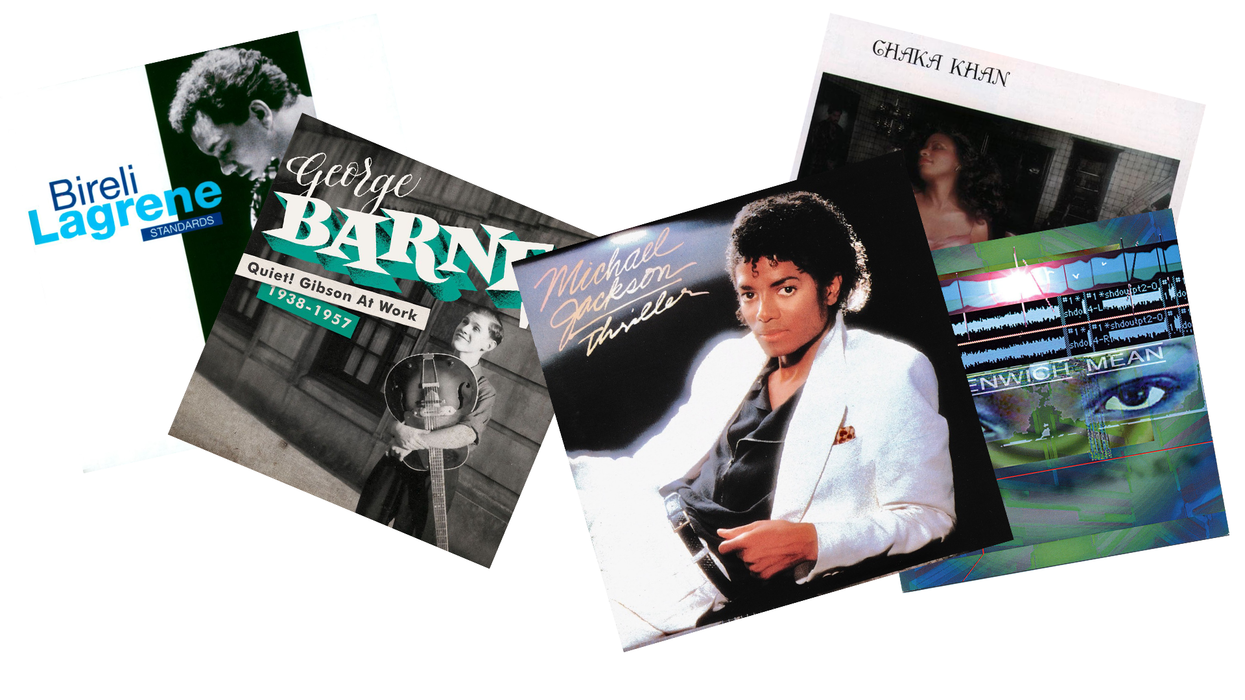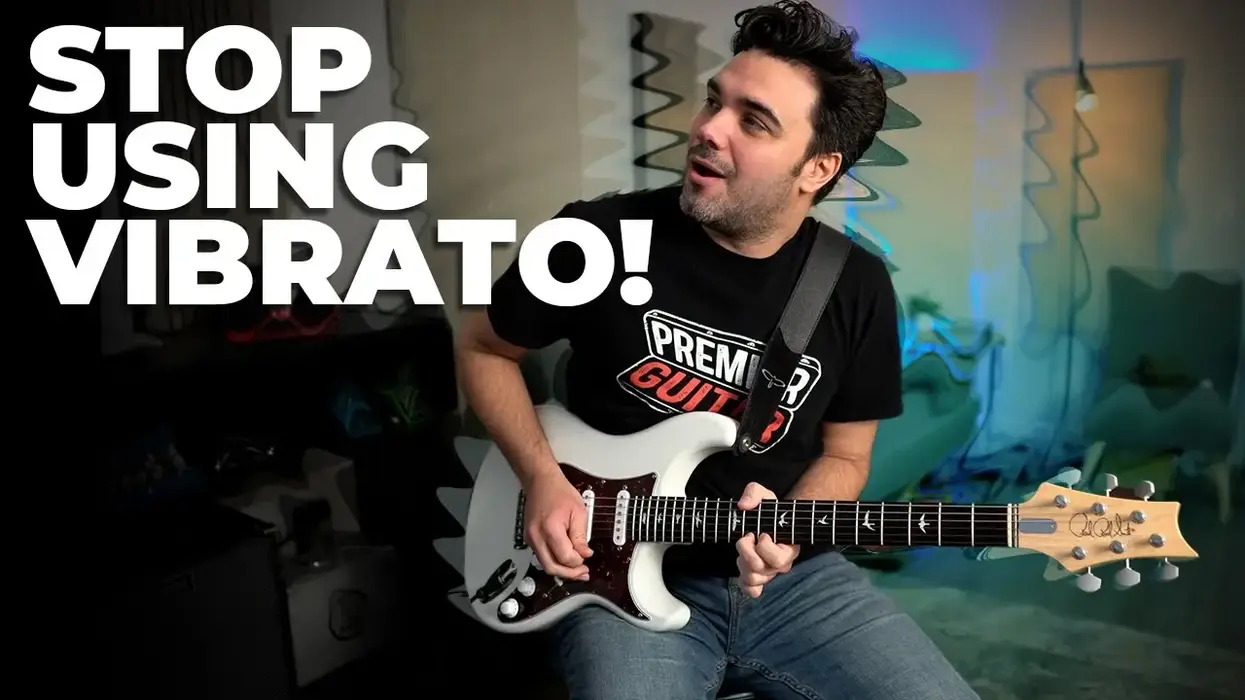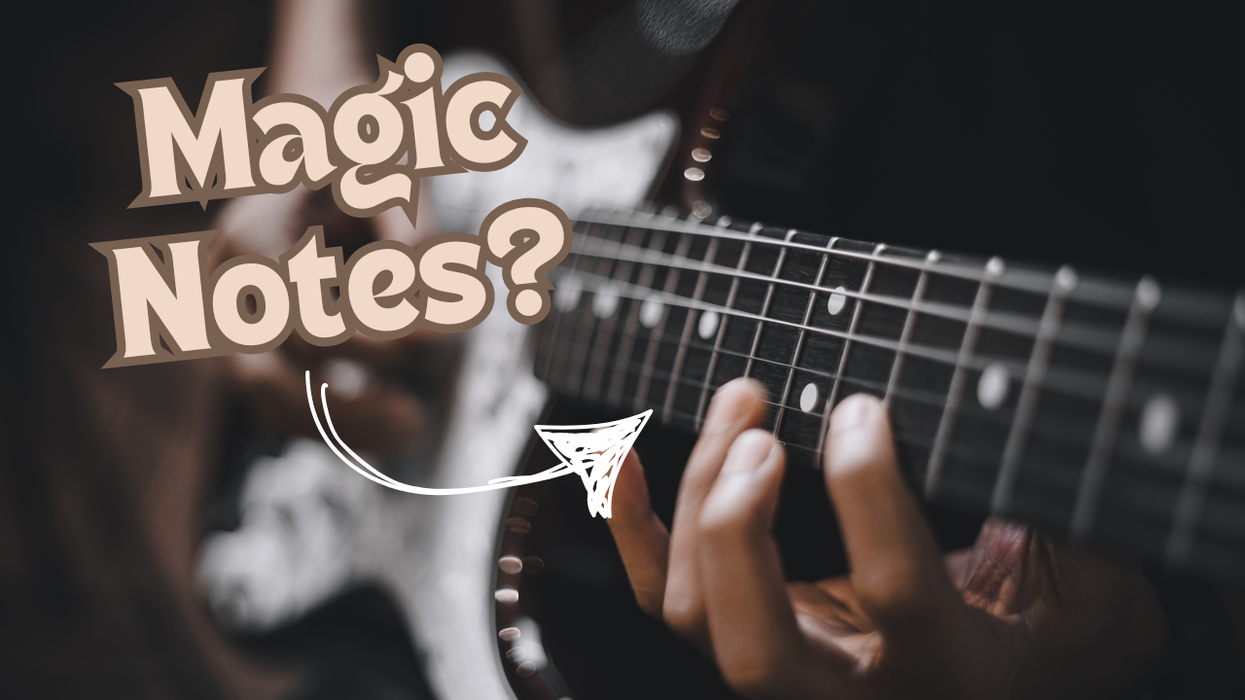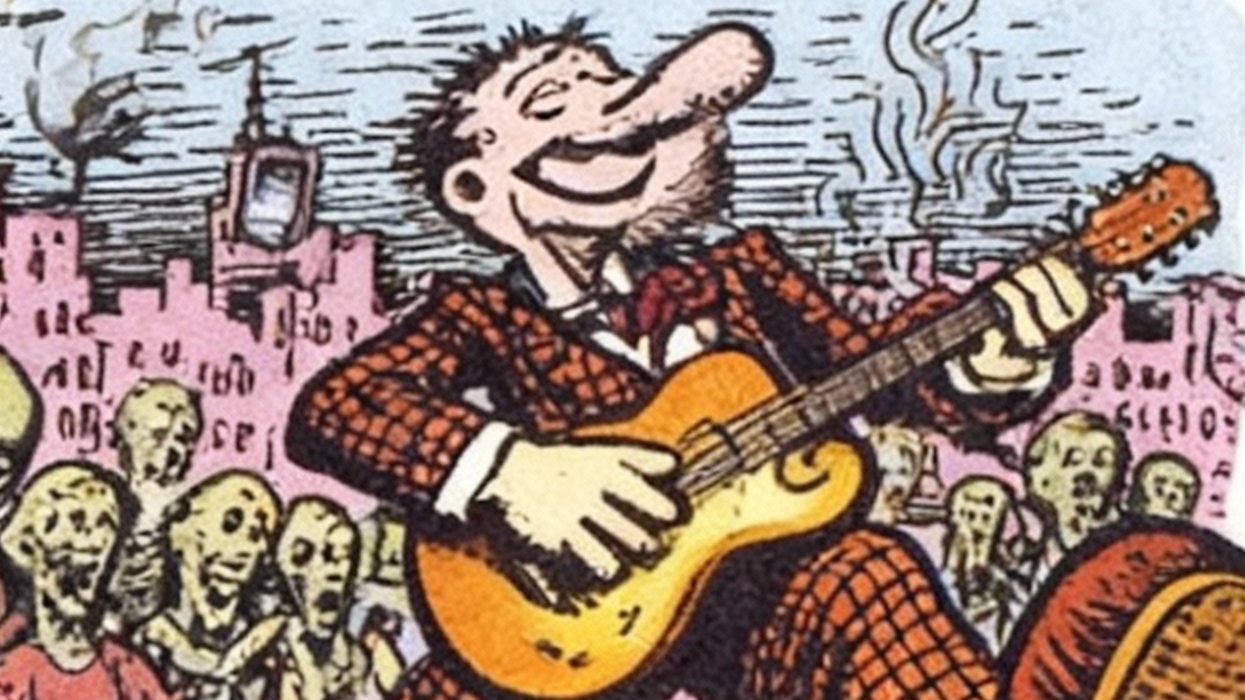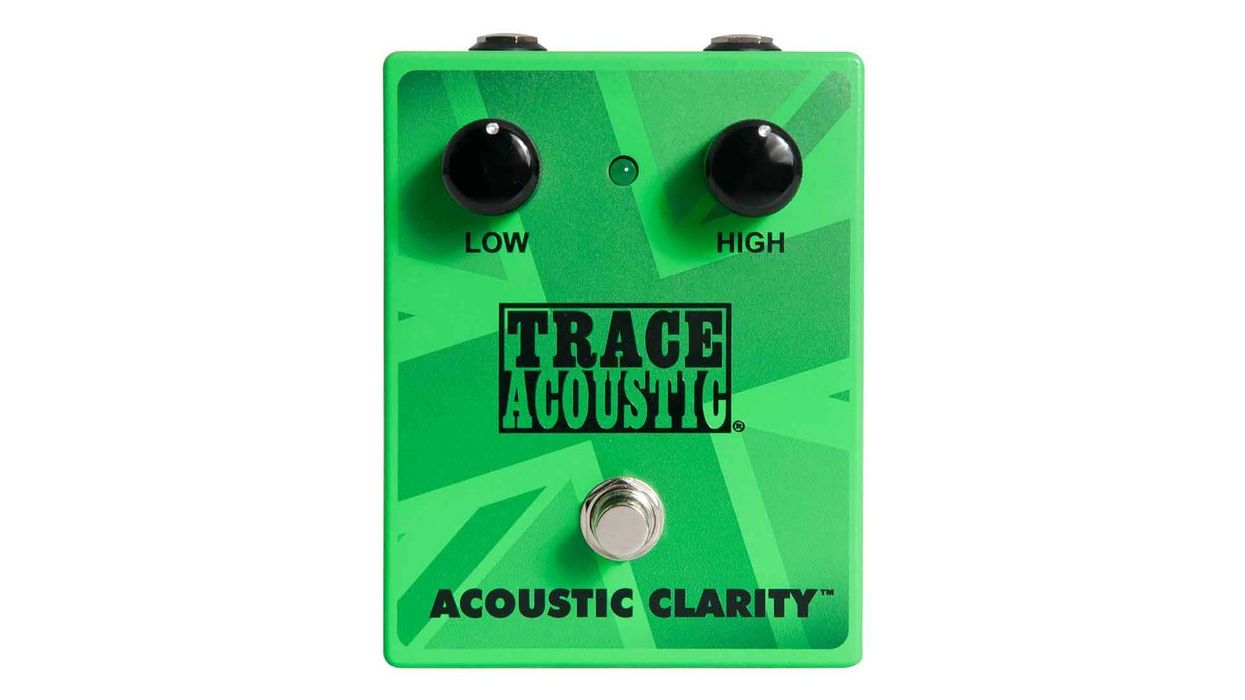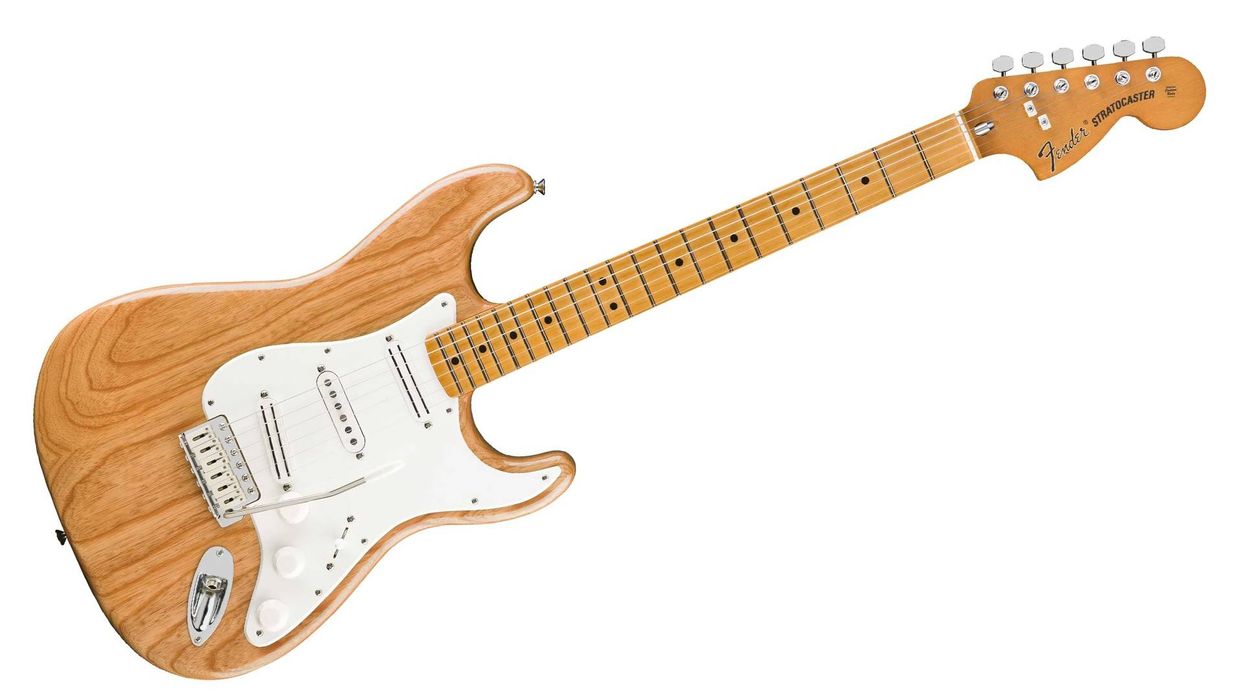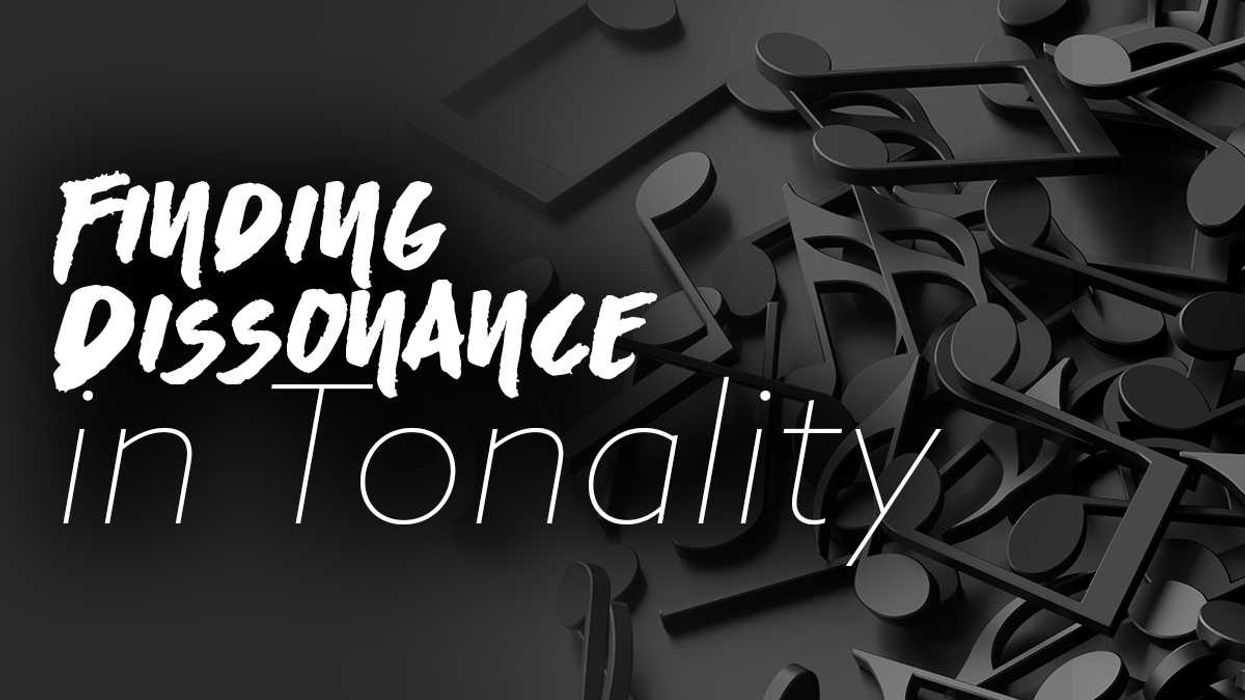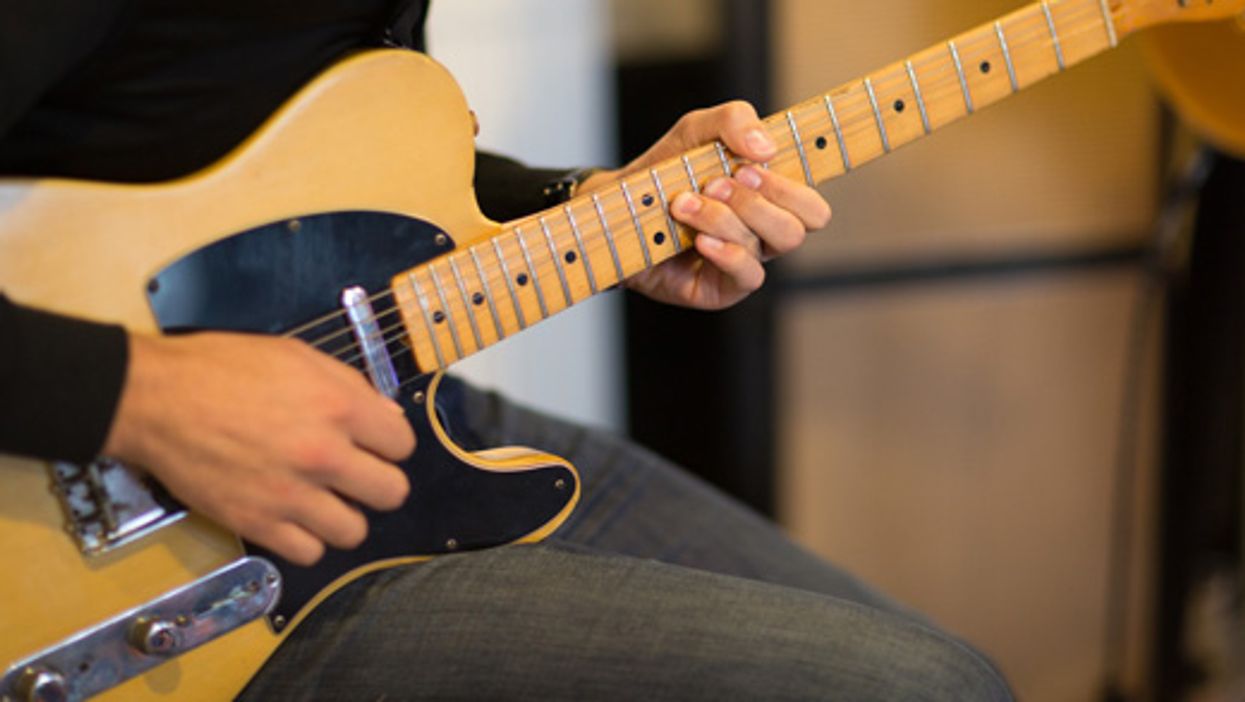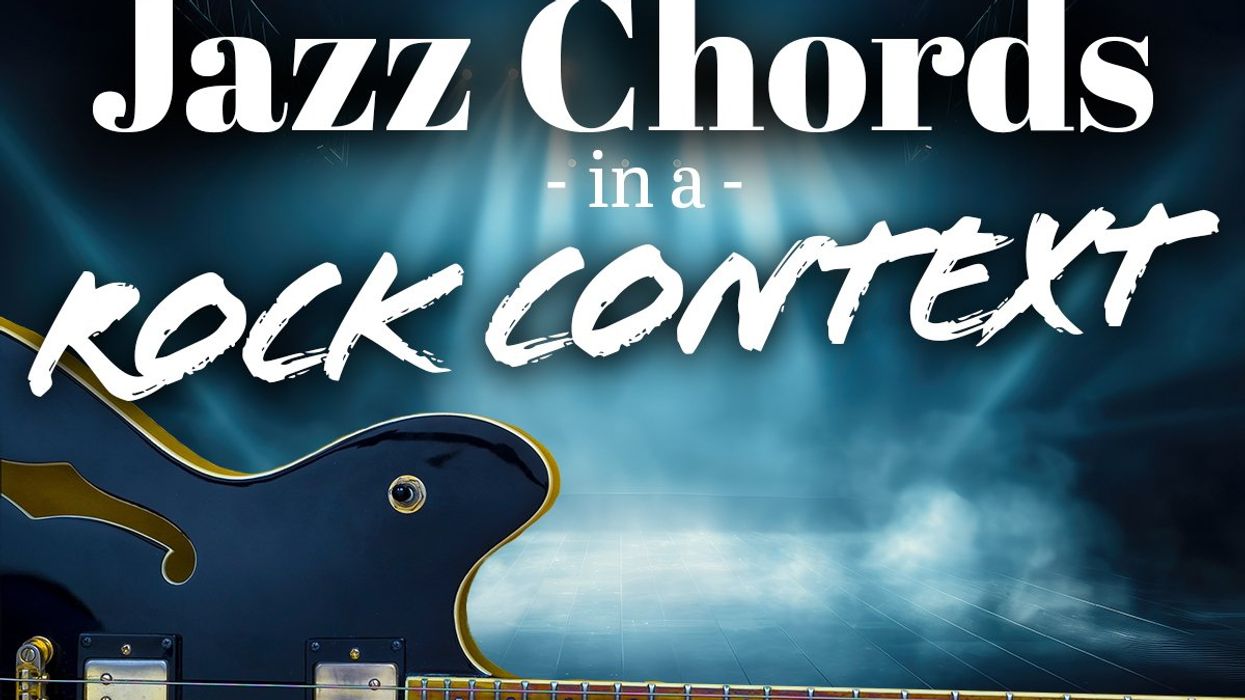Right out of the starting gate, Mark Knopfler made a huge impact on rock history. His band Dire Straits and their brilliantly conceived "Sultans of Swing" had some of the best guitar playing to ever come out of London Town. His refreshing sound convinced quite a few players to embrace the cleaner tones from their amps—and install a 5-way switch on their Strats! The band continued to amass many hits, as well as critically-acclaimed albums, filled with brilliant and innovative guitarwork. Also, Knopfler has had an incredibly prolific career as a solo artist that has included highly esteemed film scoring, production, and session work.
In this lesson, we'll focus on Knopfler's fingerstyle approach. We'll look at his simple roots and how he's developed a largely pick-less style to deliver a host of undeniably fresh sounds.
Back to Basics
In recent years, there have been a number of video interviews with Mark Knopfler in which he graciously demonstrates his guitar style—and even shows us the kind of playing he learned and developed in his formative years, and how he plays at home. As a player who held his own, literally alongside the fingerstyle mastery of Chet Atkins, Knopfler can teach us a lot about the fundamentals.
Mark Knopfler on Guitars
Taken from an excellent documentary called Soundbreaking, this is 15 minutes of pure Knopfler gold. In it, he goes deep on all things guitar from fingerpicking to resonator guitars and more.
Fingerstyle Strum
In Ex. 1, which is based on what Knopfler describes as the way he plays "around the house" and in the style of such tunes as "True Love Never Fades," we hear a thumb playing bass notes on beats 1 and 3, while the first two fingers do an up/down/up strum on the higher strings.
Ex. 1
Alternating Bass
Let's get that thumb moving. A crucial aspect of Knopfler's style is a fairly traditional quarter-note bass pattern. Use a slight palm mute and attack these notes with the thumb. This needs to be practiced to the point you can perform the alternating pattern with utmost consistency and ease. After you feel comfortable with the first half, try the second part that introduces fingers to the mix to create one of the Travis-picking patterns Knopfler favors. The crucial part here is maintaining the thumb's quarter-note bass while playing the offset fingered notes. The 3rd string is plucked with the index and the middle finger plays the 2nd string.
Ex. 2
Freight Train
Knopfler plays this classic folk tune in a Chet Atkins-style: palm-muted low strings played with the thumb while the index and middle handle the clear-ringing melodic duties (Ex. 3). Place your right hand so that the palm mute affects only the low strings and lifts clear of the trebles.
Ex. 3
Fingerstyle Lead
Knopfler is perhaps best known for his virtuosic fingerstyle lead playing, best exemplified by the early Dire Straits classic, "Sultans of Swing." Here is a passage over a Im–bVII–bVI–V progression in D minor that highlights how Knopfler combines straightforward pentatonics with chord-based note choices. To get you started, some right-hand fingering is indicated under the standard notation. (Thumb = p, index = i, and middle = m.)
Ex. 4
Lead Guitar “Rolls”
This example (Ex. 5) shows a familiar 16th-note–based figure. The right-hand fingering is crucial for getting an authentic sound and executing the pattern at fast tempos. You'll notice that the order of the plucked strokes is "circular"—if you were to repeat the figures consecutively. Definitely try it Knopfler's way: thumb/index/middle, thumb/index/middle, etc.
Ex. 5
Double-Stops
Double-stop licks are integral to Knopfler's style, as shown in this "Tunnel of Love" and "Telegraph Road"-inspired piece. This example shows some simple adjacent-string dyads played with a fairly wide vibrato, which is crucial to nailing his sound. Some triads occur in the penultimate bar, and the example is rounded out by another favorite double-stop technique: the pedal-steel–style bend.
Ex. 6
Sliding Sixths and Making the Changes
Knopfler also plays double-stops in a Steve Cropper-esque fashion (Ex. 7), where he breaks them into sustained, yet linear phrases. Of course, you'll want to use dyads that reflect the chord tones.
Ex. 7
Rock Riffing—That Ain’t Working
Knopfler's '80s anthem "Money for Nothing" has a signature sound created by his vintage Les Paul running into a half-cocked wah pedal (engaged, but not manipulated) and heavily overdriven amp. Even when he's rocking out like this, his fingerstyle approach shines through (Ex. 8). The thumb plays all the 4th-string notes, while the index and middle fingers work the 3rd and 2nd strings, respectively.
Ex. 8
Burning Lead in B
"Calling Elvis" has a great lead break, which, although it sounds extemporaneous, is actually composed, and Knopfler performs it consistently. This example (Ex. 9) features a steady flow of 16th-notes, numerous hammer-ons and pull offs, and the B blues scale (B–D–E–F–F#–A). A practical right-hand fingering is shown under the standard notation.
Ex. 9
This article was updated on July 26, 2021


